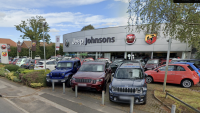More than one in five nearly-new cars on Auto Trader are priced higher than brand new equivalents, according to the platform’s latest research.
High demand in this sector of the market, cars aged up to 12 months old, has meant that 21 per cent of cars currently listed on Auto Trader are priced higher than the equivalent brand new vehicle.
It added that despite these higher prices, nearly new cars were also selling considerably faster than the same month in 2021 at an average of 30 days compared to 54 days in February last year.
The Smart Forfour EV topped the list for the highest price different between nearly new and brand new in February 2022. It was 14 per cent higher on average as nearly new at £19,9989.50 compared to the brand new price of £17,566.
Joining it at the top was another electric car from the Mercedes-Benz family, the EQA at eight per cent higher.
The top 10 features four EV variants with the Volkswagen ID.4 claiming two spots, with the ‘Life’ trim commanding five percent more in nearly new and ‘Family’ four per cent higher than brand new models.
Eight place on the list were made up by petrol hybrids too, five of them from Toyota and four of those were Yarises between five and six per cent over average brand new RRP.
The Toyota RAV4 was the highest placing nearly-new hybrid though, costing an average of £2,631 more than a brand new model would. The Honda HR-V hybrid and Hyundai Kona hybrid were also on the list, costing five per cent more on average.
Auto Trader reported that in February average retail price increased 31.9 per cent year-on-year, however it was the lowest monthly increase of 0.6 per cent recorded since April 2021.
Richard Walker, Auto Trader’s director of data and insights, said: ‘Despite some early indications that the huge acceleration in price growth that we’ve been tracking since the spring of last year is starting to stabilise, no one should be mistaken into thinking this is the start of a fall in prices. Far from it.
‘Used car values have been affected by strong levels of consumer demand in the market, combined with the ongoing new and used supply constraints, neither of which show any sign of slowing.
‘Any suggestion therefore of a bubble bursting is based on pure speculation, and not the data, which clearly points to very high prices remaining for quite some time to come.’

































